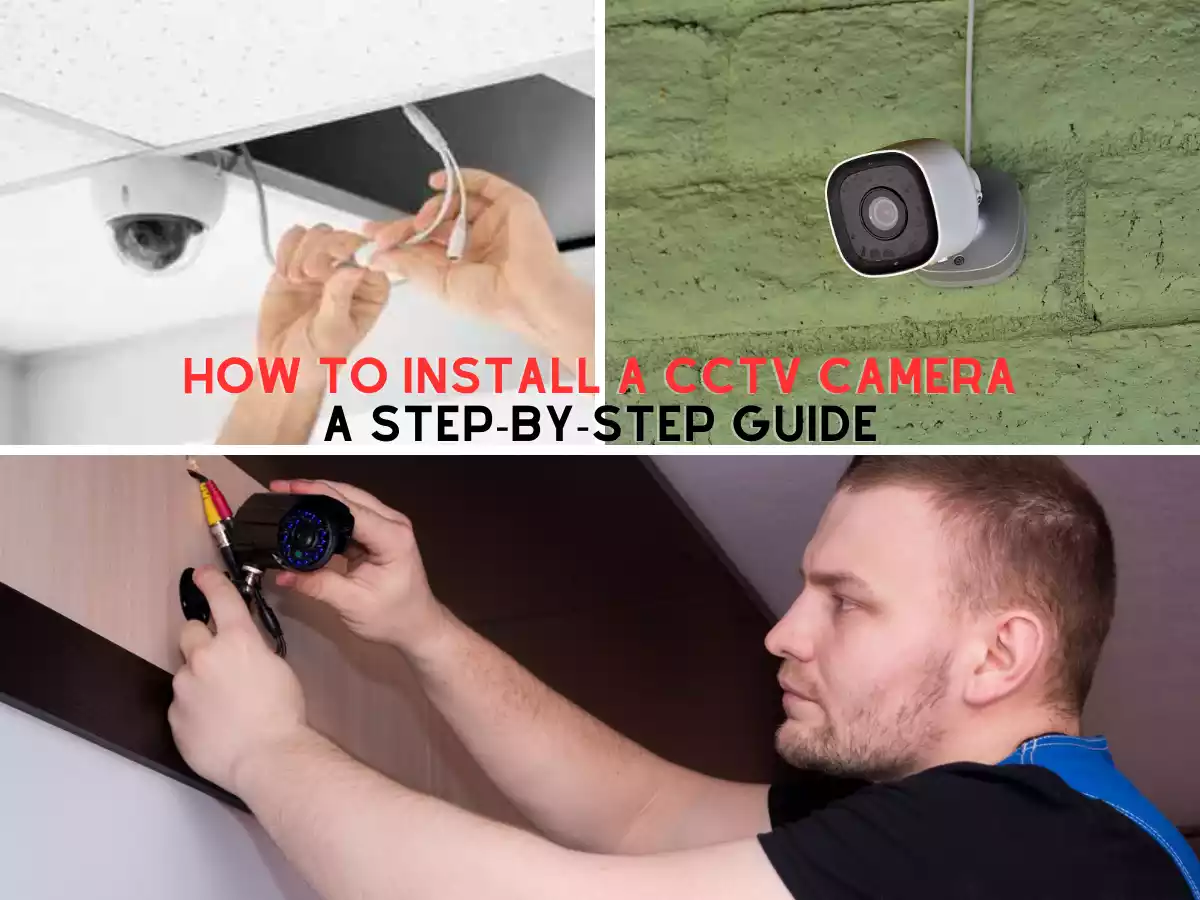Table of Contents
ToggleWhy you may choose to install CCTV cameras in your home
There are several reasons why you may choose to install CCTV cameras in your home:
- Preventing crime: The presence of CCTV cameras can prevent criminals from targeting your home, as they will be aware that their actions are being monitored and recorded.
- Evidence: In the event of a crime occurring, the footage captured by CCTV cameras can provide valuable evidence to the authorities to help identify and catch the criminals.
- Remote monitoring: With CCTV cameras, you can remotely monitor your home from anywhere in the world using your smartphone or computer. This can provide peace of mind when you’re away from home.
- Protection of loved ones: CCTV cameras can help you keep an eye on your children, elderly family members, or pets to ensure that they are safe and secure.
- Peace of mind: Knowing that your home is being monitored and secured by CCTV cameras can provide a feeling of peace of mind, especially in high-crime areas.
Overall, installing CCTV cameras in your home can provide a range of benefits, from preventing crime to providing valuable evidence in the event of an incident. It is important to choose the right type of CCTV cameras and ensure that they are installed properly to provide maximum effectiveness.
10 Things to Consider Before Installing CCTV Cameras at Home
- Privacy concerns: Installing CCTV cameras means constantly monitoring activities within your home, which may raise privacy concerns for you and your family members. It is important to discuss these concerns and ensure that the cameras are installed in a way that respects everyone’s privacy.
- Purpose: Consider why you want to install CCTV cameras. Is it to monitor your children or pets while you’re away? To deter burglars? To keep an eye on your property? Knowing the purpose will help you determine the best locations for the cameras and the features you need.
- Cost: CCTV cameras can be expensive to install and maintain. Before making the decision to install them, it is important to consider your budget and whether the benefits of having the cameras outweigh the costs.
- Choose the right type of camera: There are different types of cameras available, such as indoor, outdoor, wireless, and wired. Choose the type of camera that best suits your needs.
- Plan the camera placement: Before installing the cameras, plan where you want to place them and what areas you want to monitor. This will help you determine the best locations for the cameras and the number of cameras you need.
- Use high-quality cameras: Invest in high-quality cameras that provide clear and high-resolution footage. This will help you capture any suspicious activity and identify any intruders.
- Install cameras at a high level: Install cameras at a height that is difficult to reach and cannot be tampered with easily.
- Hide the wire: Hide the camera wires to prevent them from being cut or tampered with. This can be done using conduit pipe or by running the wires through walls.
- Maintenance: CCTV cameras require regular maintenance to ensure they are functioning properly. This can include cleaning, adjusting, and replacing parts as needed. It is important to consider the maintenance requirements before installing the cameras to ensure that you are able to keep them functioning properly.
- Regularly maintain the cameras: regularly clean the cameras and check for any damage or malfunctions. This will ensure that the cameras continue to provide optimal security.
Here are some of the main CCTV camera parts that are required for installation:
- CCTV Camera: This is the main component of the CCTV camera, which captures the video footage.
- Digital Video Recorder (DVR) or Network Video Recorder (NVR): This is used to store and manage the video footage captured by the CCTV cameras. The DVR or NVR can be connected to the internet to allow remote viewing of the footage.
- Hard Disk: The hard disk is used to store the recorded video footage, and its capacity will determine how much footage can be stored before it needs to be overwritten or backed up.
- Power supply: CCTV cameras require power to operate, which can be supplied through a power adapter or a PoE (Power over Ethernet) switch.
- Cables: CCTV cameras require cables to transmit the video signal and power supply. The type of cable required will depend on the camera type from the DVR or NVR. DVR uses coaxial cables where NVR uses Cat 5 or cat 6 cables.
- Connectors: connectors like BNC, DC, and RJ45 are also important parts of a CCTV camera installation.
- Monitor or screen: This is used to display the video footage captured by the CCTV cameras. The monitor can be connected to the DVR or NVR using HDMI, VGA, or other video output cables.
By ensuring that all of these CCTV camera parts are present and functioning properly, you can achieve an effective and reliable CCTV camera installation for your home.
How to Install a CCTV Camera at Home: A Step-by-Step Guide
Here is a step-by-step guide to installing a CCTV camera at home:
- Choose the location: First, decide where you want to install the camera. Make sure the location provides a clear view of the area you want to monitor.
- Install the mounting bracket: Use screws to install the mounting bracket in the desired location. Make sure the bracket is secure and level.
- Attach the camera: Once the bracket is in place, attach the camera and ensure that it is properly secured.
- Plan the cable routes: Plan the cable routes from the cameras to the DVR or NVR. Hide the camera cables to prevent them from being cut or tampered with. This can be done using conduit pipe or by running the cables through walls.
- Connect the connectors: an analogue camera that uses a 3+1 cable requires BNC and DC connectors, while an IP camera that uses Cat 5 or Cat 6 cables requires RJ45 connectors. Connect each connector to the DVR or NVR, and then connect the DVR or NVR to the monitor or screen where you want to view the video feed. We recommend using HDMI for the monitor for higher resolution.
- Power the camera: Analogue CCTV cameras require a power supply, so make sure to connect the camera to a power supply. IP cameras require a POE switch, so make sure to connect the camera to a POE switch.
- Adjust the camera angle: Adjust the camera angle to ensure the desired view is captured. You can adjust the angle by loosening the screws on the mounting bracket and rotating the camera.
- Test the camera: Once the camera is installed and connected, test it to ensure it is working properly. Check the video output on the monitor to confirm that the camera is capturing the desired view.
- Fine-tune the camera: If necessary, fine-tune the camera settings, such as the focus and exposure, to optimize the image quality.
Note: It is recommended to consult with a professional installer or refer to the manufacturer’s installation manual for detailed instructions specific to your analogue or IP CCTV camera model.




